Sara Jenkins' Italian Porchetta
 January 27, 2015
January 27, 2015 
What do you do when you miss a dish that you can get in Italy but doesn't exist here? If you're Chef Sara Jenkins, you open your own storefront and start making and selling that dish. That's how Porchetta was born, a tiny storefront in the East Village in New York City that sells heavenly servings of porchetta, a pork dish that is found all over central Italy. In Rome, it's sold frequently on the street in food carts. It's pork that is stuffed with herbs, slow roasted and piled high on a bun. And it's outrageously delicious.


The secret to great porchetta is the cut of meat. In Italy, it's made with a whole deboned pig but Sara makes hers with a pork shoulder with the fat and skin still attached. The skin part is important, because if you've ever tasted pork cracklings, you know how delicious crispy pork skin can be. I had to go to two butchers in my area before I found one who could get a pork shoulder with the skin still attached for me. In my area, Merindorf Meats was able to get that cut for me. I had to buy a large order of it, but they cut in in half for me and I froze half. Each piece was about 4 to 4.5 pounds of pork. IF you cannot find a butcher to get this cut for you (and you should really try) then use a regular pork shoulder and order a pork belly. Wrap the pork belly around the pork shoulder. This is a decent substitute, but you won't have the skin and that is worth trying to get.

a pork shoulder with the fat and skin still attached
There is another little secret to the herbs - Sara uses fennel pollen, which is an ingredient that can be hard to find in most stores. If you can't find this in your area, you can order some here. It's awesome stuff - when I smell it, it just says "pork" to me.


The dish is very simple. You score the skin, stab the pork all over with a knife and insert a mixture of fresh herbs in the slits. You tie the roast up and slow roast it for a few hours, basting it with white wine. The combination of the fatty meat with the lean meat and then the crispy skin is amazing. You can serve it as a sandwich on buns, or you can serve it with the good cooked greens and crispy potatoes.

Want to see Sara Jenkins prepare this dish at her store? Watch this great video:
Sara Jenkins' Italian Porchetta
It is best to get a pork shoulder with the fat and skin still on. This is usually a special order at a butcher shop, but it is worth it to see if your butcher can do this. The skin is an important crispy, delicious part of the final dish. If you can't you can get a regular pork shoulder and order a pork belly and wrap that around the pork shoulder.
for a printable recipe click here
Ingredients
- 1 4-pound boneless pork shoulder with the fat cap and skin still on or a 4-pound pork shoulder and a separate pork belly
- 20 fresh sage leaves
- 3 leafy sprigs fresh thyme, leaves removed
- 3 leafy sprigs rosemary, stemmed
- 2 garlic cloves, peeled and roughly chopped
- 2 tablespoons fennel pollen (swap out for dried fennel if you can't get this)
- 1 ½ teaspoons medium coarse sea salt
- 1 ½ teaspoons freshly cracked black pepper
* optional: I like to add a couple of tablespoons of lemon zest to the herbs because really like lemon with pork. - 2 tablespoons extra-virgin olive oil
- ½ cup dry white wine

Instructions
- Heat oven to 250 degrees F.
- Use a sharp knife to score the pork skin in a cross-hatch diamond pattern, making ⅛ inch deep cuts, about an inch apart.
- Finely chop the sage, thyme, rosemary and garlic and stir it together with the fennel pollen, salt, and pepper (I ground all his up together in 30 seconds in my food processor). Add the lemon zest, if using.
- With a paring knife, making 10 incisions (about ½ inch deep) all over the pork and stuff those slits with a third of the herb mixture. Tie the pork and brush oil all over the skin and rub the pork with the remaining herb mixture. If you are using the skinless pork shoulder and pork belly, do the same scoring to the pork belly and the same seasoning steps and then wrap the pork belly around the pork shoulder and tie.
- Set the pork in a roasting pan, fat side up, and roast for two hours. Pour the wine over the pork and baste with the wine and pork juices. Continue roasting, basting once every hour, until the skin is well browned and the meat is spoon tender 2½ to 3 hours more (the internal temperature should be between 170 and 180). Remove from the oven, turn the oven temp up to broil and return the pan to the oven just for a minute or two until the skin is extra crisp. Remove again and let the meat rest for 15 minutes before slicing and serving.

if you can't get a pork shoulder with the skin on, buy a regular pork
shoulder (left) and a pork belly (right) and wrap the pork belly
around the pork shoulder.


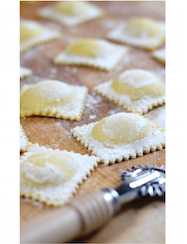
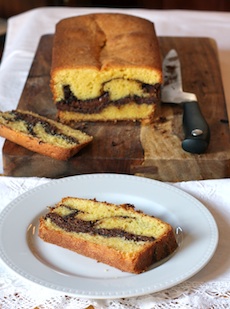
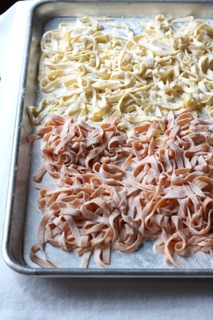
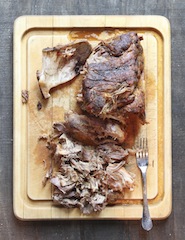

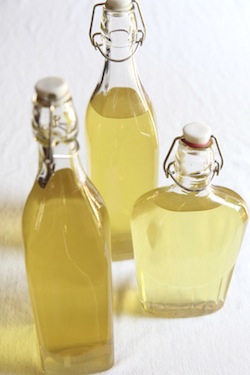
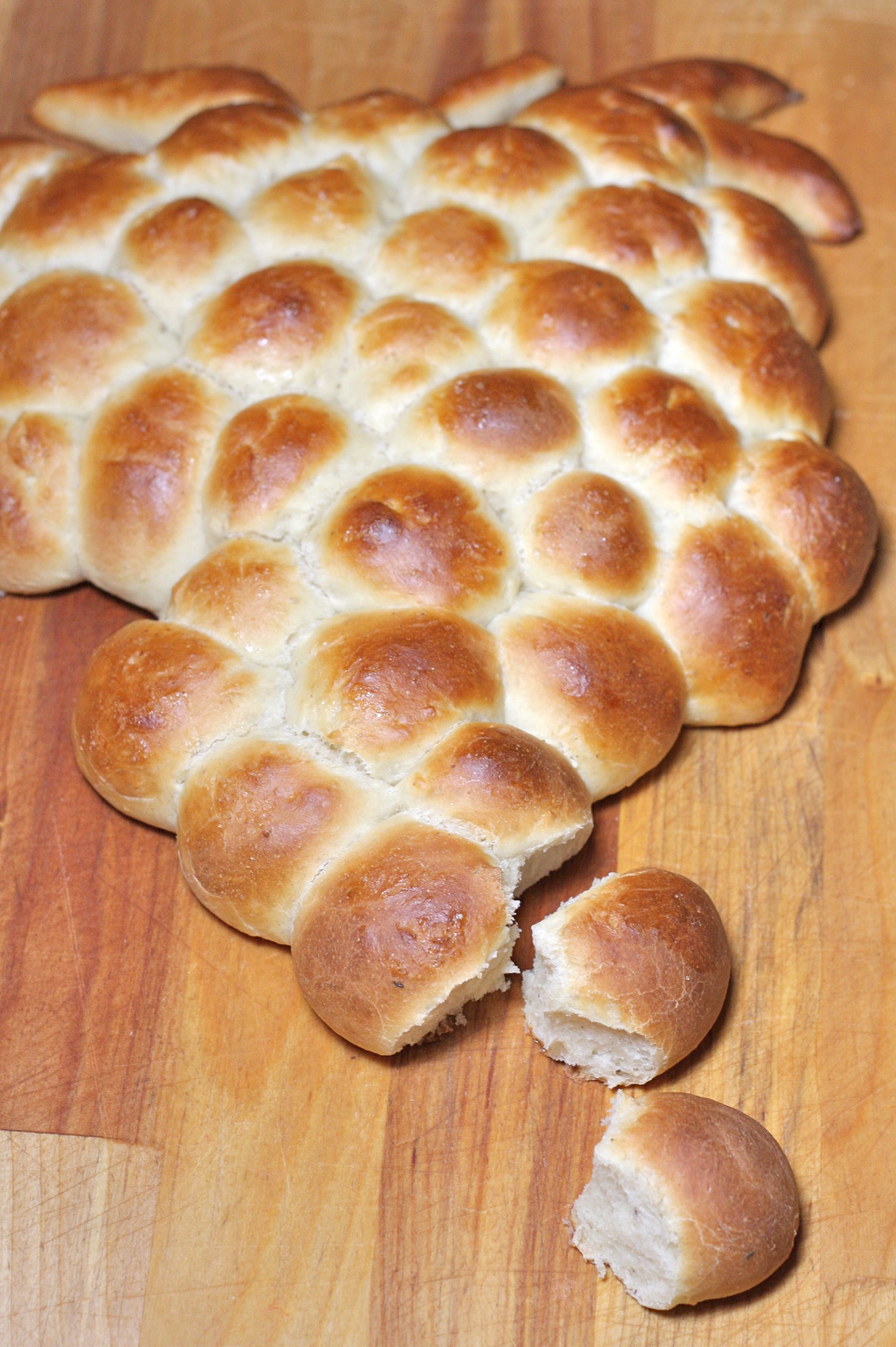

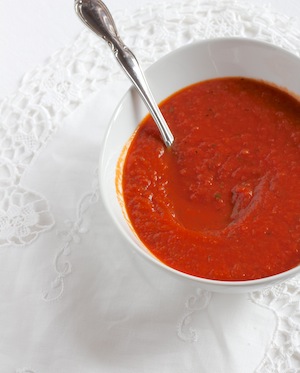









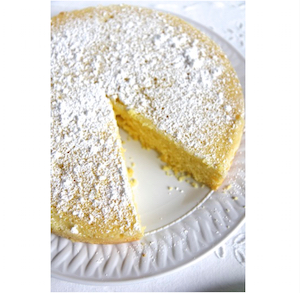
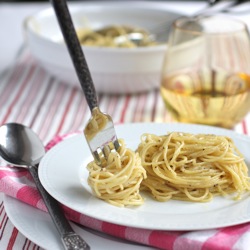


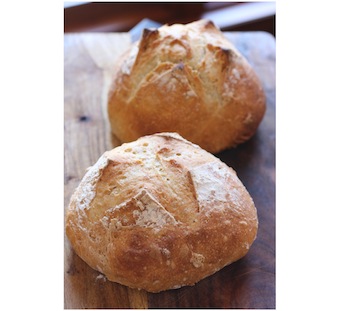


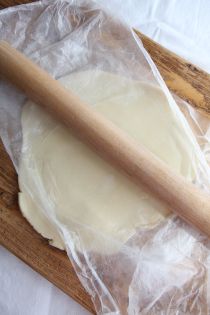

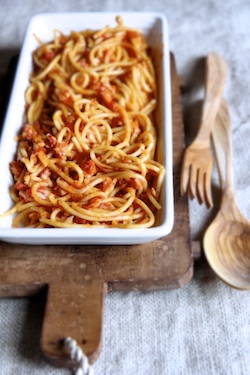
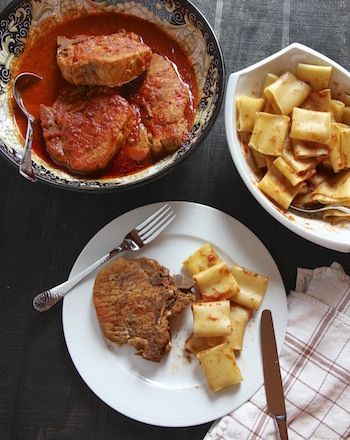
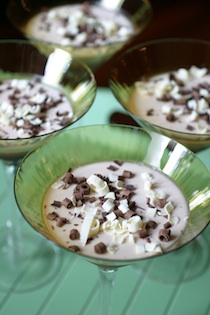








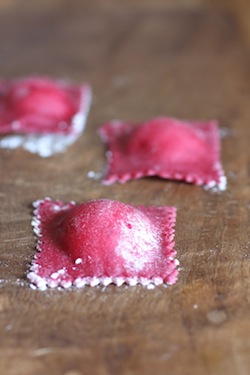



Reader Comments (10)
My local Asian supermarket has pork shoulder with skin.
Oh my, that looks heavenly!
Oh My!! I can't wait to get my hands on a pork shoulder. The pork is usually my Honey's domain and if I have to search for a butcher to get us that pork with the skin I will. Oh I am so excited. Grazie for sharing this. Your pictures are simply awesome and so very descriptive. I will let you know how it turns out -- I am on a MISSION!!
The porchetta recipe handed down to me from my father's family, who are from the Marche area of central Italy, is thickly sliced and stuffed with handfuls of fresh dill, lots of chopped garlic, plenty of salt and pepper, then tied up with more dill inserted under the string, dusted with garlic powder, S&P, and roasted until very tender. As it roasts the kitchen is filled with the amazing dill/garlic fragrance and it tastes heavenly.....I'm wondering why I've never seen a porchetta recipe made with fresh deill and garlic, but just with herbs as the recipe above (which I have no doubt is also very delicious). Have you ever had the dilled version of porchetta? If not, may I suggest you try it some time.
I have made a similar recipe many times. It is most possibly the best pork EVER. Cooking it slow and low is the way to go. And, to add icing to the cake, pork shoulder is a very inexpensive cut of meat so the recipe is easy on the pocketbook, too!
Dill does not exist in Central Italy but I suspect that it's been used instead of fennel which abounds in the area and is used to make porchetta both in Umbria and Le Marche.
I just came back from a visit with my cousins in Rimini, Italy. Just North of the Marche Region. They use the fennel tops...which look nearly identical to dill...to stuff the porchetta. They actually made me rabbit stuffed with "porchetta" seasoned pork and it was filled with the fennel tops.
jambal d4f391380b https://cdn.thingiverse.com/assets/91/9c/5f/b7/6e/berzophi211.html
emilljarro d4f391380b https://cdn.thingiverse.com/assets/e4/78/fb/e9/26/lausio630.html
The Sara Jenkins' Italian Porchetta recipe sounds amazing! I love the idea of using fennel pollen for that unique flavor. The crispy skin, tender meat, and fresh herbs make this dish irresistible. I’ll definitely try this next time I want to impress my guests with a delicious Italian feast!